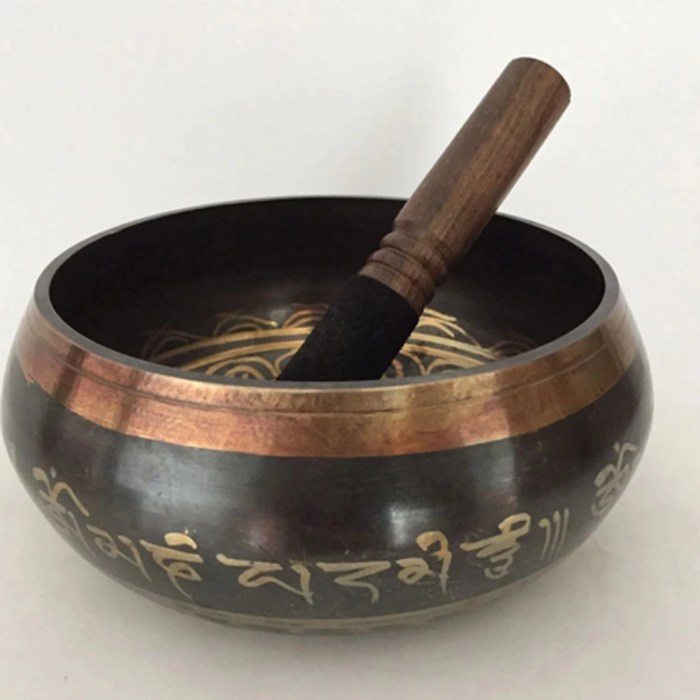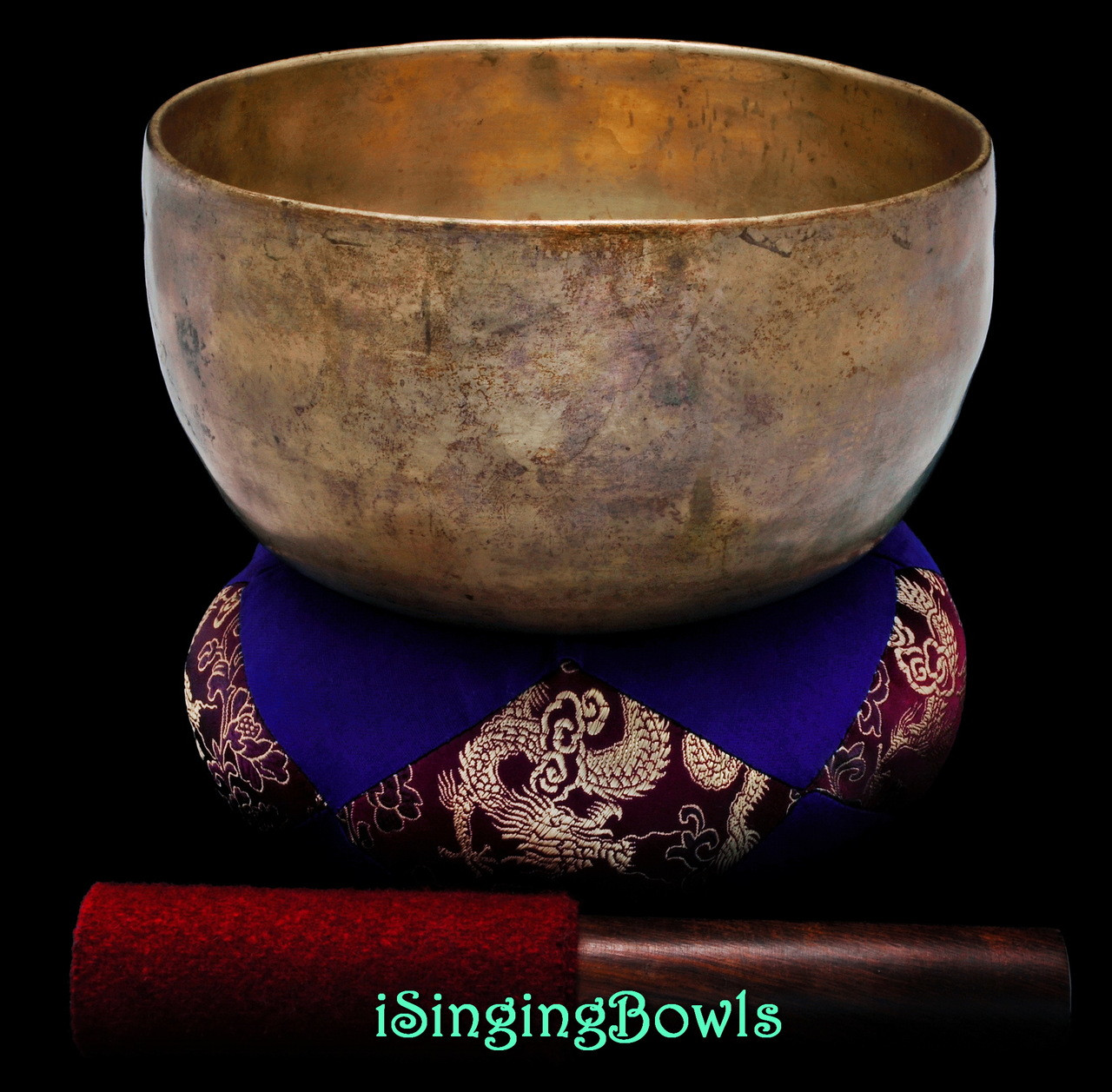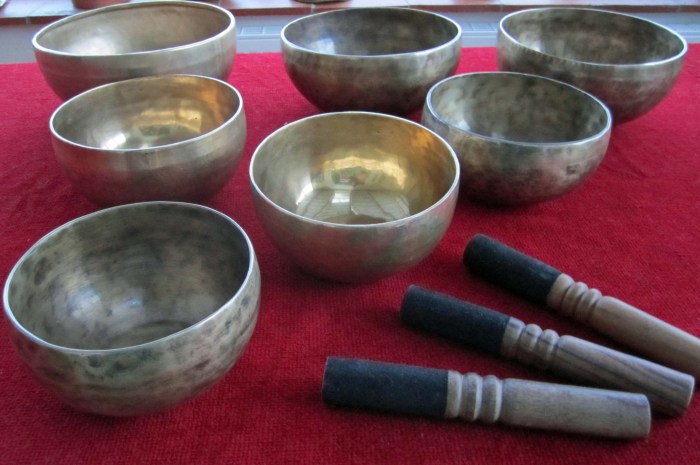Tibetan singing bowl sets the stage for this enthralling narrative, offering readers a glimpse into a story that is rich in detail and brimming with originality from the outset. This traditional instrument carries a deep cultural significance and unique craftsmanship that captivates both the mind and soul.
Crafted with precision and imbued with centuries-old techniques, Tibetan singing bowls produce mesmerizing sounds that resonate with the essence of ancient traditions. Let’s delve into the mystique of these remarkable instruments that transcend time and space.
Introduction to Tibetan Singing Bowl

Source: etsystatic.com
Tibetan singing bowls have a rich history dating back to ancient times in the Himalayan region. These unique instruments were originally used for meditation, rituals, and healing practices.
They hold significant cultural importance in Tibetan and Buddhist traditions, believed to have spiritual properties that promote relaxation, focus, and healing of the mind, body, and soul.
Materials Used in Tibetan Singing Bowls
Tibetan singing bowls are traditionally made from a combination of metals such as copper, tin, zinc, iron, silver, and gold. The precise composition of these metals is thought to contribute to the quality of sound and vibrations produced by the bowl.
How Tibetan Singing Bowls are Made

Source: ambientsoundlab.com
Tibetan singing bowls are crafted using traditional techniques that have been passed down through generations. The process of making these unique instruments involves skilled craftsmanship and attention to detail.
Crafting Process
Tibetan singing bowls are typically made from a combination of metals, including copper, tin, iron, and other trace elements. These metals are melted together and then shaped into a bowl using a hammer and anvil. The bowl is then carefully hammered into shape, with the rim of the bowl being shaped to create a distinct profile.
Traditional Techniques
One of the most important aspects of making Tibetan singing bowls is the hand hammering process. This technique involves skilled artisans using hammers of various sizes to shape the metal bowl and create the unique tones and vibrations that singing bowls are known for. The hand hammering process is crucial in creating bowls with rich, harmonious sounds that resonate deeply.
Significance of Hand Hammering
Hand hammering allows for a level of precision and control that is difficult to achieve with machines. Each strike of the hammer on the metal bowl creates subtle variations in the thickness and shape of the bowl, resulting in a bowl with a complex and dynamic sound profile. The hand hammering process also imparts a sense of craftsmanship and tradition to each Tibetan singing bowl, making each one a truly unique piece of art.
The Science Behind Tibetan Singing Bowls

Source: bigcommerce.com
Tibetan singing bowls produce unique sounds that are not only pleasant to the ear but also believed to have healing properties. The science behind these bowls involves the physics of sound production, vibrations, and the frequencies generated.
Physics of Sound Production
When a singing bowl is struck or rubbed with a mallet, it sets the bowl in motion, causing it to vibrate. These vibrations create sound waves that propagate through the air, producing the characteristic tone of the bowl. The shape, size, material, and thickness of the bowl all influence the sound produced.
Generation and Amplification of Vibrations
As the singing bowl vibrates, it creates a resonance that amplifies the sound. The vibrations travel through the bowl and are enhanced by the shape and structure of the bowl. The rim of the bowl, in particular, plays a crucial role in amplifying the vibrations and producing a sustained sound.
Healing Properties of Sound Frequencies
The sound frequencies produced by Tibetan singing bowls are believed to have healing properties. It is thought that these frequencies can help to reduce stress, promote relaxation, and improve overall well-being. The vibrations produced by the bowls are said to have a harmonizing effect on the body and mind, restoring balance and promoting healing.
Playing Techniques and Sound Variations

Source: colourofsound.org
When it comes to playing Tibetan singing bowls, there are various techniques that can be used to produce different sounds and vibrations. The size and shape of the bowl play a significant role in determining the type of sound that is produced, along with the playing technique employed. Let’s explore the different methods and variations in sound that can be achieved.
Playing Techniques
- Striking the bowl: One common technique involves striking the bowl with a mallet to produce a clear and resonant sound. The intensity of the strike can affect the volume and intensity of the sound produced.
- Rubbing the rim: Another technique involves rubbing the rim of the bowl with a mallet or wooden stick to create a continuous and soothing sound. This method can produce sustained vibrations and harmonics.
- Using water: Some practitioners fill the bowl with water before playing it, which can alter the sound produced and create unique tonal variations.
Effect of Size and Shape
- Size: Larger bowls tend to produce deeper and more resonant sounds, while smaller bowls produce higher-pitched tones. The size of the bowl determines the frequency of vibrations and the richness of harmonics.
- Shape: The shape of the bowl can also influence the sound produced. Bowls with a wider rim may produce a brighter sound, while bowls with a narrower rim can create a more focused and concentrated tone.
Tones and Harmonics
- Primary tone: Each bowl has a fundamental tone that is produced when played. This primary tone is determined by the size, shape, and composition of the bowl.
- Harmonics: Tibetan singing bowls are known for their rich harmonics, which are additional tones that resonate along with the primary tone. By controlling the playing technique and pressure, different harmonics can be emphasized and explored.
- Overtones: Overtones are higher-frequency tones that are produced simultaneously with the primary tone. These overtones add complexity and depth to the sound of the bowl.
End of Discussion

Source: astralwonders.com
As we conclude our exploration of Tibetan singing bowls, we are left with a profound appreciation for the artistry and science behind these captivating instruments. Their melodic tones and healing vibrations continue to echo through the ages, reminding us of the enduring legacy of this ancient practice.